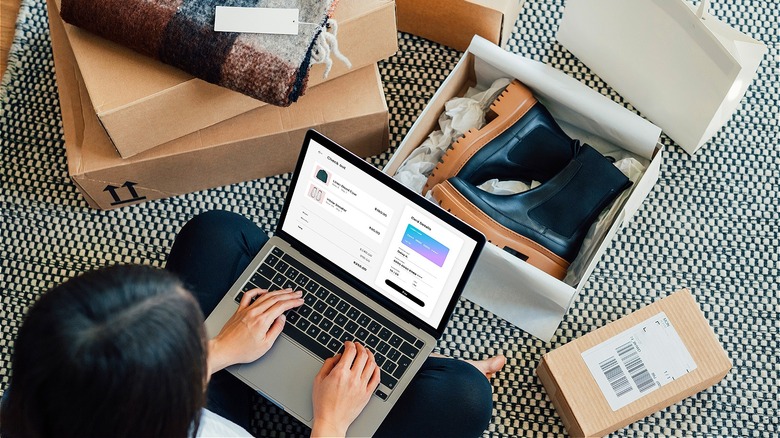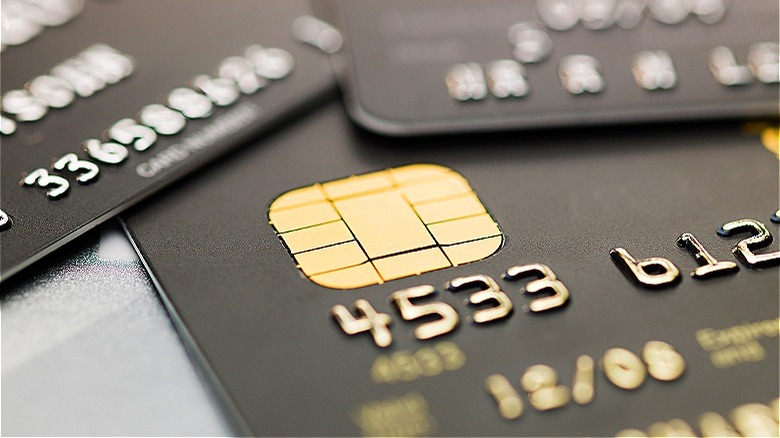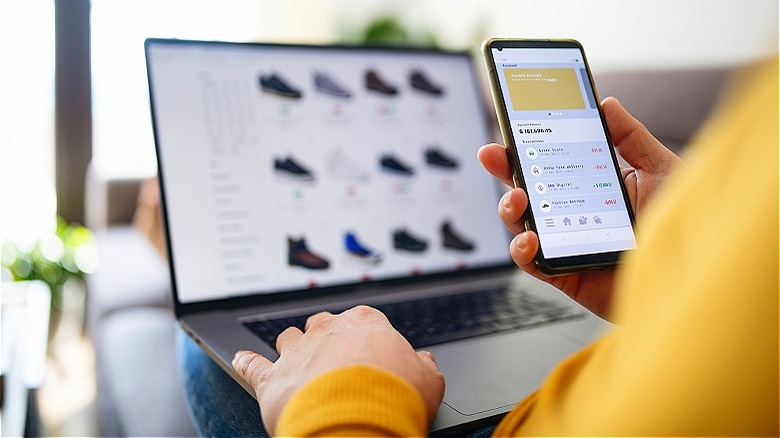The 24-Hour Rule Is The Money-Saving Hack You Need
A number of behaviors that emerged during the COVID-19 pandemic shutdowns have stuck with society, from the continued utilization of Zoom in the workplace to always having a backup pack of toilet paper in the house. While these actions won't break the bank (unless you're stockpiling Scott), another favorite quarantine pastime that's stuck around easily could: impulse buying.
According to a 2021 study published in the International Journal of Environmental Research and Public Health, consumers were able to experience much-needed moments of happiness during the pandemic shutdowns each time they clicked the "purchase" button, whether it was on their favorite store's website, Amazon, or, a shopping platform that's growing exponentially in popularity, TikTok Shop. Even when malls opened back up, the masses opted for the convenience of online shopping, which lets them obtain essentially any item that looks appealing within seconds ... and without a second thought.
Meanwhile, a 2023 study by Bankrate found that, on average, Americans spend $754 annually on products that they saw advertised by influencers on social media. Forty-eight percent of respondents said that at least one of their purchases from social media was an impulse buy, with 68% of them regretting the purchase. While scrolling and seeing influencers promoting the latest back massager, makeup, or clothing fad, it can be hard to resist being, well, influenced (speaking of, check out how much influencers make for mentioning promotions in their videos). However, buying unnecessary item after unnecessary item on a whim can add up quickly, which is why consumers should try practicing the 24-hour rule.
The 24-hour rule explained
Whether it's a $100 sweater from Macy's or a new luxury setting powder that a makeup influencer is promoting on TikTok, financial experts recommend refraining from whipping out the credit card right away for nonessential products. Rather, when one is on the verge of an impulse buy, they should give themselves 24 hours to ponder if they truly need it.
Jaspreet Singh, of YouTube's Minority Mindset, said, "You're not telling yourself not to spend the money. You're just giving yourself a little bit of a pause, 24 hours to think about it." If they wake up the next day and still feel strongly about obtaining the product, then they should move forward if it's within your budget. Still, per Singh, it's likely that the person will decide they don't actually want the product, saving themselves both money and regret. (Review other bad money habits that can cause you to go broke.)
Glen James, host of the Australian finance podcast "My Millennial Money," meanwhile, takes the 24-hour rule a step further by incorporating the 1% rule (via CNBC). According to James, if someone is about to splurge on something that costs more than 1% of their annual gross income, they should take 24 hours to reflect on if it's worth the money. In fact, it could benefit people to wait even longer than 24 hours if they're contemplating a pricier purchase. For example, they can stick to the 24-hour rule for items $100 or less but may want to wait 48 hours for anything costing $100 to $200, and so on.
Why people impulse spend
There are many psychological factors at play when it comes to impulse buying that can make it difficult to resist, even when one does put money-saving practices, like the 24-hour rule, into place. Impulse buying is largely centered around emotions, with consumers craving that burst of dopamine that comes with an unplanned purchase. Whether one treats themselves to takeout on the way home from work after a bad day or snags the latest product a social media influencer claimed changed their life, people often look for a sense of instant gratification ... especially when they're feeling stressed, bored, or generally unhappy. Though the impulse buy may boost their mood in the moment, leaning on retail therapy too heavily ultimately will make them feel worse once they get that credit card statement.
Additionally, advertising — whether it be online or brick-and-mortar — is crafty and feeds into the consumer tendency to impulse buy. For example, most of us have had the unsettling experience of Googling an item, only for ads of that same item to greet us on Facebook and other platforms. This can make it harder to resist making the purchase when we're inundated with reminders about said item, and it's only a click away. (By the way, removing your saved credit card information from websites is another way to stop compulsive spending.)


